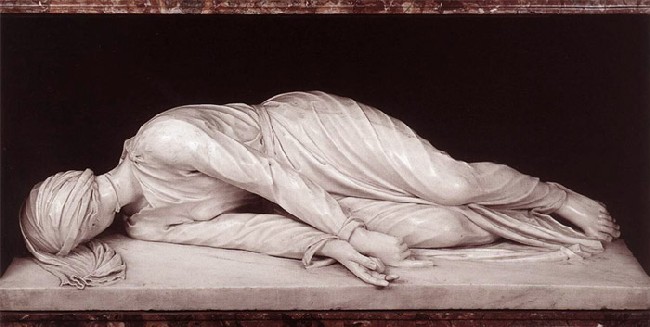And, there is a welcoming door between the community and the monastery.
St. Basil’s monasticism “was not closed to the community of the local Church but instead was open to it. His monks belonged to the particular Church; they were her life-giving nucleus and, going before the other faithful in the following of Christ and not only in faith, showed a strong attachment to him - love for him - especially through charitable acts. These monks, who ran schools and hospitals(1), were at the service of the poor and thus demonstrated the integrity of Christian life.”(2)
“In speaking of monasticism, the Servant of God John Paul II wrote: ‘For this reason many people think that the essential structure of the life of the Church, monasticism, was established, for all time, mainly by St Basil; or that, at least, it was not defined in its more specific nature without his decisive contribution.’"(3) (4) (5)
From the earliest days, monasticism was integrated into both the life of the Church and life of the community. When God gives a person to the monastic life, that person becomes a gift to both the Church and community, from a life centered in God.
____________________________
Footnotes:
(1) St. Basil built hospital facilities that were a key step in the development of the modern hospital concept where people are admitted for medical treatment. A classic example of monastic activity — charitable, practical, innovative.
(2) Benedict XVI, General Audience, 4 July 2007, on Saint Basil.
(3) Apostolic Letter Patres Ecclesiae, n. 2, January 1980; L'Osservatore Romano English edition, 25 February, p. 6).
Quoted in Footnote (2).
(4) St Basil died in 379 AD, 101 years before St. Benedict was born. St Basil lived in what is now modern-day Turkey — the East, and St. Benedict lived in Italy — the West. St. Benedict used many of St. Basil’s monastic principles when St. Benedict compiled the Rule of St. Benedict — the Rule that serves as the foundation for all Western monasticism.
(5) St. Basil was born into a family of saints, a Domestic Church, where he received the upbringing in the spirit of God, his older sister is St. Macrina. He studied in Athens and Constantinople. He became a priest and later a bishop of Caesarea—Cappadocia (Turkey). St. Basil is a Doctor of the Church. Long New Advent article on St. Basil the Great.
.
Sunday, December 7, 2008
St. Basil: No wall of separation between Church and monastery.
Subscribe to:
Post Comments (Atom)










John, God bless you and this blog! I just found it and I am trying to catch up on your past blogs. Very informative and helpful. I am a Catholic who returned two years ago after about 20 gone from the church. I am currently beginning my novitiate with a monastery. I found such a connection with the Rule and its emphasis on a Middle Way. It keeps me grounded and focused on the goodness and mercy of God. I recently purchased the Benedictine Daily Prayer Short Breviary and prefer it because it allows me to participate with the Benedictine monks (and nuns)as they pray the offices. Plus I feel more connected to my sister and brother Oblates.
ReplyDeleteI am just thrilled to find a Benedictine blog that discusses the Oblate life!
PAX!
Jim
Jim,
ReplyDeleteI am very pleased that you are beginning your novitiate after returning to the Church.
Your comment about the Middle Way is what I feel too. The strength of the Benedictine Middle Way was an epiphany to me.
As you probably know, I use Benedictine Daily Prayer too — again for the same reason as you.
Have you thought of doing a blog yourself? There are about 25,000 oblates in the world. I would like to see that number of oblate blogs. I would be happy to help you get started, blogs are easy to set up and are free.
For me, as a former Protestant, most of what I had been told about the Catholic church was either false or misleading (I suspect because the people had no first-hand knowledge) and Benedictine oblates are even a fairly well-kept secret in the Catholic church — at least that has been my expedience.
Helping others like me (former non-Catholics) learn about oblates is one of the reasons for this blog. Thank you for the kind comments.
Thank you, John. I may just begin a blog. I know there are many Catholics who left the Church and may want to come back. I actually became a Protestant pastor for four years after attending a seminary. But, I was always "missing" something. I got divorced and then felt I was "lost" to the Catholic church, because I did not understand the correct teachings of the Catholic Church.
ReplyDeleteSince a dear friend invited me back to the Church, I think it is my responsibility to offer that same gift to others.
Thanks for the idea of a blog. I will get started on that and let you know when I get it going. I will use Blogsspot I guess.
Blessings,
Jim
Jim,
ReplyDeleteSuper. I like it!
I think that individual hearts are the key to renewal in the Church — that returning to the deep and full spiritual traditions of the Catholic Church are an important part of awakening hearts to God — and that monastic traditions are often the spring from which that awakening flows.
It is clear that you have been blessed by God and called to his work.
Peace to you,
John
Thank you for encouraging my new apostalate! I started the blog. You can find it at www.returning-catholics.blogspot.com
ReplyDeletePax! Jim
Jim, excellent blog. I cannot wait to read more! Very well done. You speak to many hearts.
ReplyDelete